Philippine fish dishes celebrate the country's rich maritime bounty and culinary diversity. Sinigang na Isda, a tangy fish soup, features a tamarind-based broth with vegetables like tomatoes, radish, and kangkong (water spinach). Escabeche showcases fried fish topped with a sweet and sour sauce made from vinegar, sugar, and spices. Daing na Bangus, or marinated milkfish, is seasoned with vinegar, garlic, and peppercorns before being fried to perfection. Paksiw na Isda, a vinegar-based fish stew, offers a savory-sour flavor profile with the addition of ginger, garlic, and chili peppers. These dishes highlight the Philippines' love for seafood and its diverse culinary traditions.
Burong Isda

Burong isda is a Filipino delicacy crafted from cooked rice and raw filleted fish fermented with salt and angkak (red yeast rice) for approximately a week. Popular in central Luzon, particularly using freshwater fish, its unique fermentation process renders the fish flesh tender and the bones soft like cartilage when cooked. Before serving, it's typically sautéed in oil, garlic, and onion, akin to balao balao, and enjoyed as either an appetizer or a main dish. The preparation method mirrors that of balao balao, involving scaling, eviscerating, and filleting the fish, followed by overnight salting and mixing with cooled cooked rice before undergoing fermentation for 7 to 10 days at room temperature.
Pinangat na isda

Pinangat na isda, also known as pangat na isda, is a traditional Filipino dish originating from Southern Luzon. It features fish and tomatoes stewed in a broth infused with the sourness of fruits like bilimbi, calamansi, tamarind, or santol. This dish can also be prepared with shrimp. While resembling sinigang, it offers a milder tartness.
Sometimes referred to as paksiw, which primarily utilizes vinegar for souring, pinangat na isda is distinct. It's often confused with laing, a Bicolano dish known as pinangat na gabi orpinangat na laing, yet they are separate dishes altogether.
Sarsiado
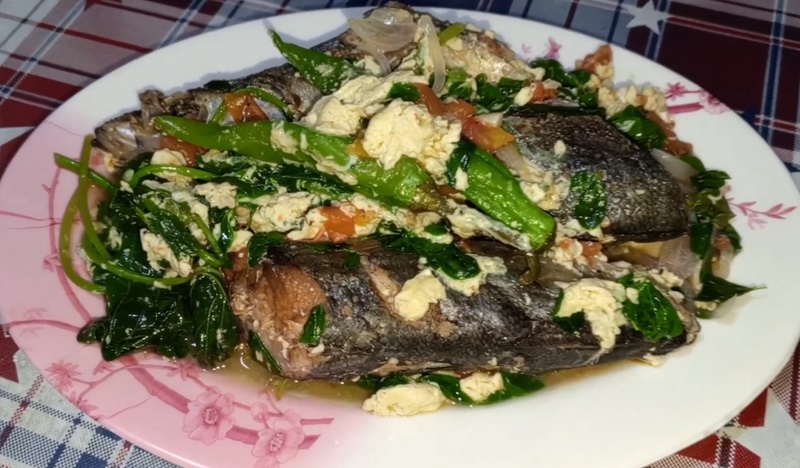
Sarsiado, also spelled sarciado, is a traditional Filipino fish dish enriched with tomatoes and eggs. Its name, derived from the Tagalog word for "cooked with a thick sauce," showcases its flavorful essence. The sauce, known as sarsa, embodies a guisado flavor base of garlic, onion, and tomatoes, although the latter can be omitted in some variations. This dish harmoniously combines the elements of two separate dishes: piniritong isda (fried fish) and tomato-scrambled eggs, reminiscent of the Chinese stir-fried tomato and scrambled eggs.
Ginataang Isda
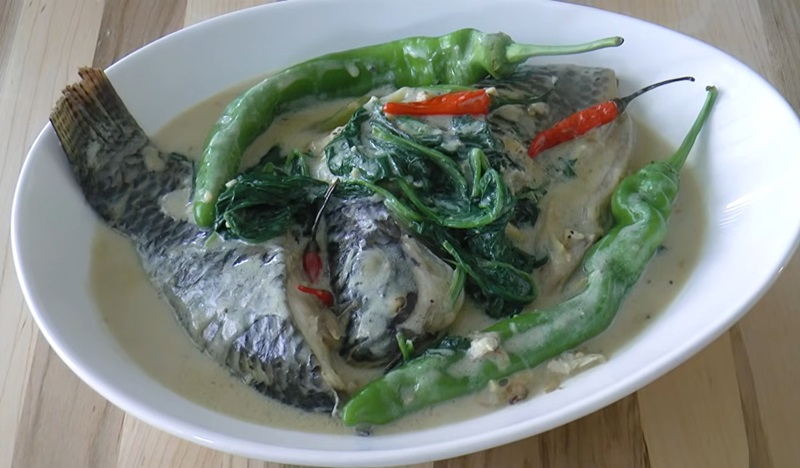
Ginataang isda is a traditional Filipino fish stew prepared with fish and leafy greens simmered in coconut milk alongside garlic, onion, ginger, fish sauce or shrimp paste, pepper, and salt. This dish, a variation of ginataan, can also be soured with vinegar, a method known as paksiw. Typically, ginataang isda is named after the type of fish used, such as ginataang tilapia (tilapia), ginataang tambakol (yellowfin tuna), ginataang galunggong (blackfin scad), and ginataang tulingan (skipjack tuna).
Sinanglay
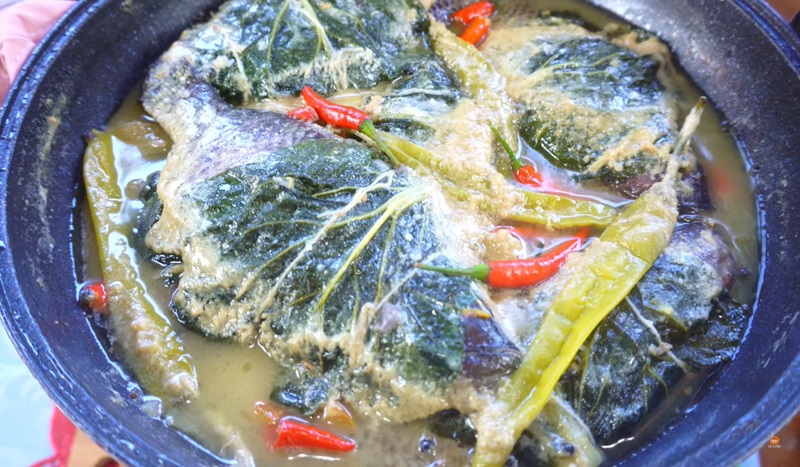
Sinanglay is a Filipino dish originating from the Bicol Region, comprising stuffed fish wrapped in leafy vegetables and lemongrass or pandan leaves, cooked in a spicy coconut milk sauce. The fish is filled with a mixture of onions, garlic, scallions, tomatoes, and siling haba chilis, then wrapped in large leafy greens like pechay or taro leaves and secured with pandan leaves or lemongrass. It is simmered in coconut milk seasoned with black pepper, ginger or turmeric, fish sauce or shrimp paste, labuyo chilis, salt, and a souring agent like tamarind, calamansi, or bilimbi. The dish is often garnished with prawns or shrimp and served with white rice.
Tinapayan

Tinapayan is a Filipino dish that comes from the Maguindanao people, featuring tapay (fermented cooked rice) and dried fish. This dish is closely related to the more popular northern dish burong isda but distinguishes itself by first drying the fish. The preparation of tinapayan is a time-consuming process, but it yields a dish with excellent preservation capabilities. The fish, typically snakehead or catfish, undergoes a three-day sun-drying process. Subsequently, it is enveloped in tapay, along with chilis, ginger, and other spices. This mixture is left to ferment for at least another week. After the fermentation period, the fish is shredded and deep-fried before serving. Tinapayan is commonly enjoyed with white rice, making it a unique and flavorful dish in Filipino cuisine.
Fish longganisa

Fish longganisa, also known as fish chorizo, is a Filipino sausage crafted with fish instead of the traditional pork or beef. Commonly utilizing tuna, tilapia, or milkfish, it undergoes the same preparation process as traditional longganisa but is promoted as a healthier option. It can be encased in regular pork casings, vegetable-based casings, or served "skinless." Often hailed as a nutritious substitute for pork longaniza, fish longganisa is commonly enjoyed alongside fried rice and a sunny side up egg for breakfast. It also complements rice, fried egg, and a zesty dipping sauce, while steamed green vegetables serve as an ideal accompaniment.
Lumlom
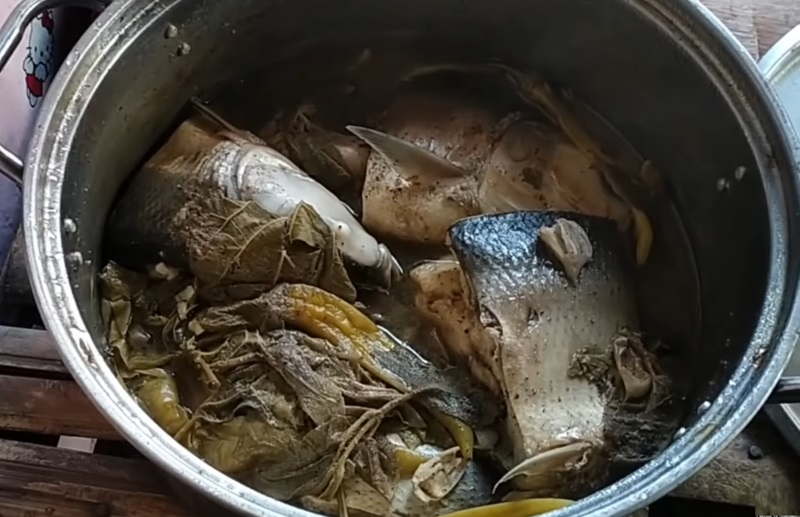
Lumlom is an ancient Filipino fermented fish delicacy with roots tracing back to Bulacan province. Fish, often milkfish or tilapia, is buried in mud for a day or two to undergo slight fermentation. Post-fermentation, it's cleaned and cooked in spices, nipa vinegar, and occasionally coconut cream, resembling paksiw sa tuba. This dish is a favorite pulutan, typically enjoyed alongside alcoholic beverages. Similar to Burong isda, Tinapayan, Balao-balao, and Narezushi in essence.
Lumpiang isda

Fish Lumpia, also known as Lumpiang Isda, is a delightful twist on the classic Lumpiang Shanghai, replacing ground pork with fish flakes as the main filling. To prepare, the fish is sautéed with carrot, onion, celery, and parsley, lending a flavorful and aromatic touch. Once cooked, the mixture is carefully wrapped in thin egg roll wrappers and deep-fried until golden and crispy.
This appetizer pairs wonderfully with a variety of dipping sauces such as banana ketchup, sweet and sour sauce, or a tangy and spicy vinegar made with white vinegar, chopped Thai chili, crushed garlic, and crushed black pepper. While the process of preparing the filling and frying the lumpia is relatively simple and suitable for beginners, mastering the art of wrapping the delicate rolls may require some practice.
Fish Lumpia is a versatile dish that can be enjoyed not only as an appetizer but also as a satisfying main course when served alongside warm white rice. Its crunchy exterior and savory fish filling make it a delightful addition to any meal or gathering.
Inun-unan
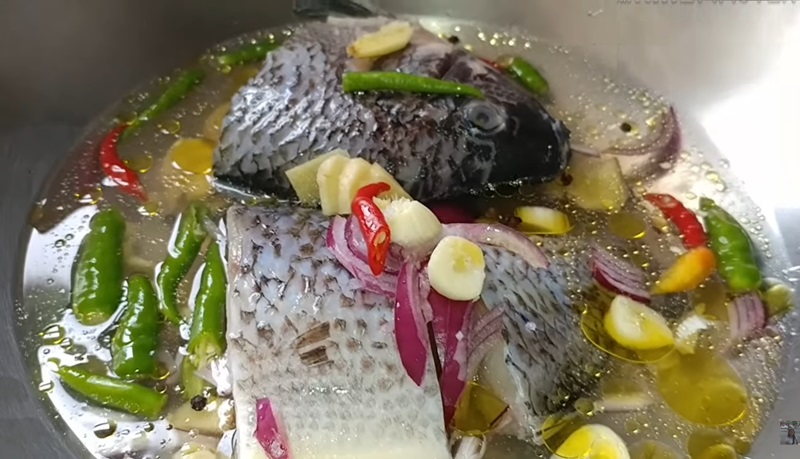
Inun-unan is a traditional Filipino fish dish that is known for its tangy and savory flavors. The dish is typically made by cooking fish in vinegar and spices, resulting in a delicious meal that is both comforting and satisfying. Inun-unan, also known as inun-onan, stands out as a distinctive Visayan rendition of the traditional fish paksiw dish. It is distinguished by its robust seasoning, primarily featuring ginger, along with onions, pepper, shallots, salt, and occasionally siling haba chilis. In contrast to the northern version of paksiw na isda, it forgoes the addition of vegetables, and the broth is prepared with minimal to no water. This dish is sometimes referred to as "boiled pickled fish" in English. The name originates from the Visayan verb "un-un" or "un-on," which means to "stew with spices, vinegar, and salt." To prepare Inun-unan, a variety of fish can be used, such as mackerel, tilapia, or even bangus (milkfish).
Paksiw na isda
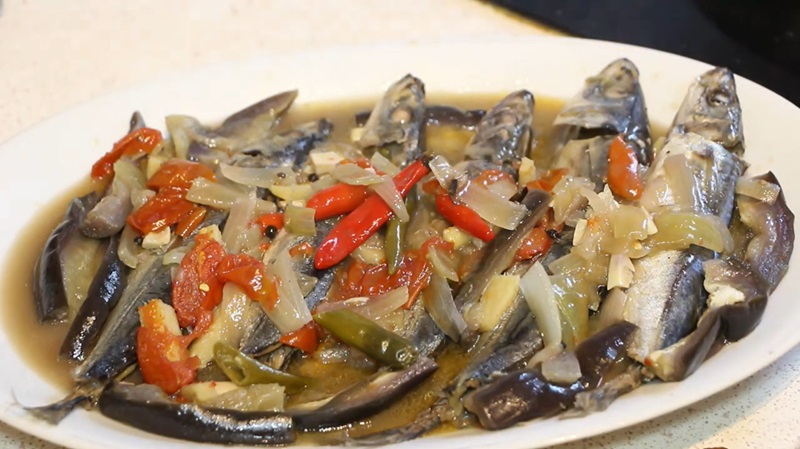
Paksiw na isda refers to fish simmered in a vinegar-based broth seasoned with fish sauce and spiced with siling mahaba, often accompanied by vegetables like ampalaya (bitter melon).
The term "paksiw" encompasses dishes cooked in vinegar and garlic, extending to meats like pork (seen in dishes like Lechon Paksiw and Paksiw na Pata) and seafood.
Paksiw na Isda is a popular and convenient seafood dish enjoyed by many Filipino families as part of their daily meals. Given the Philippines' abundant coastline and several thousand islands, fish is a dietary staple.
While Paksiw na Bangus (Milkfish) is the traditional choice for this dish, other fish varieties are also commonly used based on availability, personal preference, and budget considerations.
Afritadang isda

Afritada is a classic Filipino dish featuring chicken, pork, or beef simmered in a tomato sauce with potatoes, carrots, and bell peppers. It's commonly served over white rice and is a staple in Filipino cuisine. This versatile dish can also incorporate seafood such as fish or mussels. Variations include beef (afritadang baka), chicken (afritadang manok), and pork (afritadang baboy). Some versions are cooked hamonado-style, with added pineapple for sweetness, known as "pineapple afritada." It's important to note that this differs from pininyahang manok, which is a chicken dish with pineapples but without tomato sauce.
Paksiw na dilis
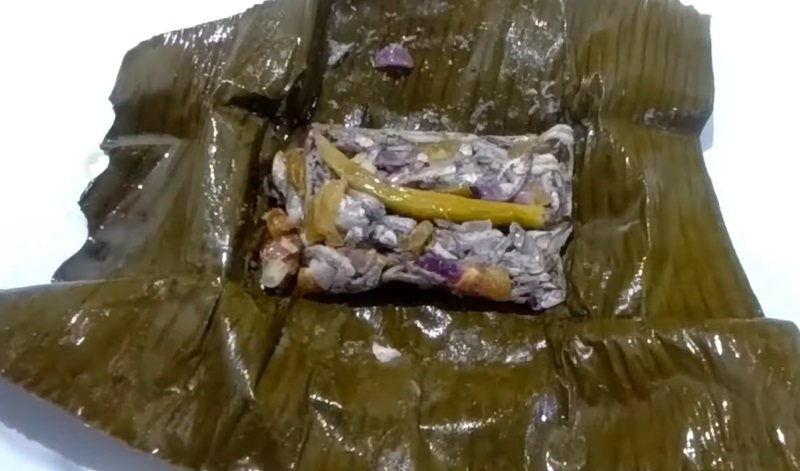
Paksiw na dilis is a traditional Filipino fish dish that showcases the country's rich culinary heritage. Dilis, also known as anchovies, are small saltwater fish commonly found in Philippine waters. This dish is popular due to its simplicity, affordability, and delicious taste. Paksiw na dilis is a popular Filipino dish featuring anchovies or small fish stewed in vinegar with garlic, onions, and spices. The term "paksiw" denotes the method of cooking in vinegar, resulting in a comforting sour-savory flavor. Enjoyed with steamed rice, this dish preserves the fish while delivering a tangy taste. The addition of garlic, onions, and ginger enhances its depth and aroma, offering a simple yet satisfying culinary experience that showcases the distinct flavors of the dilis.









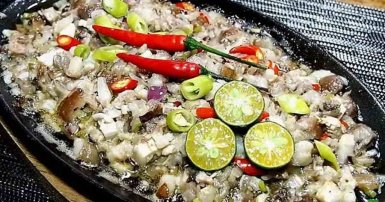



-1709813013.jpg)


